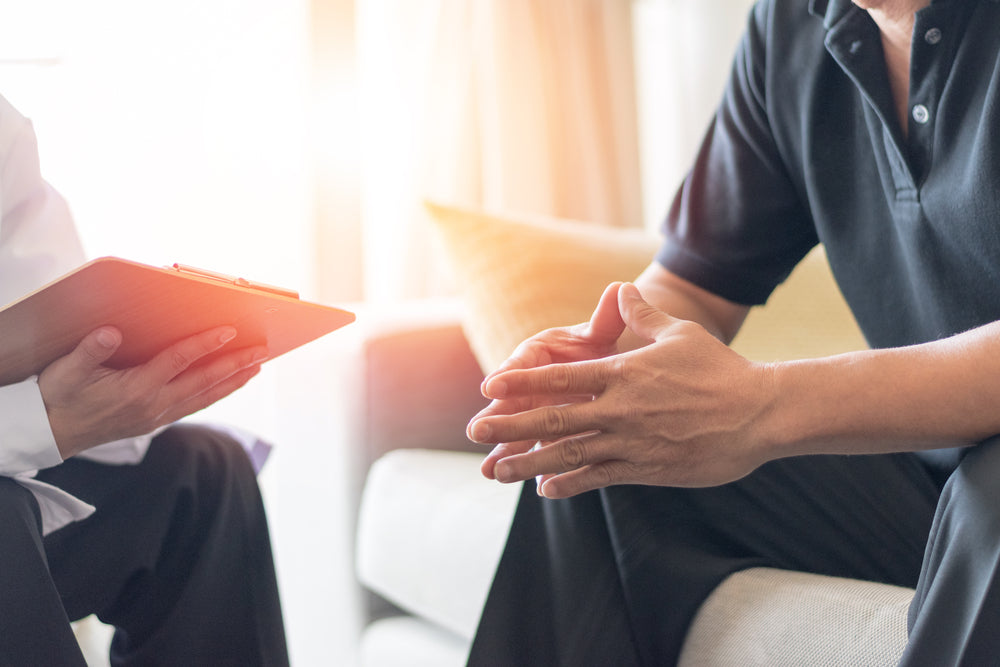In order to be diagnosed with sleep apnea you must undergo a sleep study and have the results and diagnosis confirmed by a board-certified sleep physician. Like many disorders that require long-term treatment, a sleep apnea diagnosis qualifies you to receive a variety of sleep apnea treatments like CPAP, AutoPAP, BiPAP, or even surgery and dental appliances.
While you may be suspicious that you are suffering from undiagnosed sleep apnea, there is no way to receive “over the counter” treatment. While there may be some products out there that claim they will help your apnea condition, the only tried and true treatments require a formal diagnosis as well as an individualized prescription.
Signs You May Have Sleep Apnea
While you may be wondering how to get diagnosed with obstructive sleep apnea (OSA), many who suffer from this sleep disorder may not even know that they have it. Over 85% of OSA sufferers go undiagnosed because the side effects of untreated sleep apnea seem fairly benign.
- Nighttime Symptoms
- Loud, persistent snoring
- Witnessed pauses in breathing (often from a family member or significant other)
- Choking or gasping for air during sleep
- Restless sleep
- Frequent visits to the bathroom
- Daytime Symptoms
- Early morning headaches
- Excessive daytime fatigue or drowsiness
- Poor concentration
- Depression, irritability, or mood swings
- Sleepiness during routine activities (e.g. driving)
If you or someone you love is suffering from these common side effects, it is imperative to have a sleep study done soon. Untreated sleep apnea can lead to alarming medical conditions if left untreated, like high blood pressure, heart failure, Type 2 diabetes, and even cancer.
What Makes Your Diagnosis “Official”
In order to get diagnosed with sleep apnea, you have to undergo a sleep study with an approved sleep lab or home testing company. Both options will give you a proper diagnosis and both will qualify you for approved treatments. Sleep studies, regardless of their location, are a surefire way to see if you are suffering from an untreated sleep disorder.
However, in-lab sleep studies can be expensive, uncomfortable, and somewhat unnecessary if you are fairly certain you have sleep apnea. For those suffering from other sleep disorders like insomnia, narcolepsy, or restless leg syndrome, an in-lab sleep study can be a necessary step.
Because sleep apnea is easy to spot during a sleep study and it’s also fairly common, in-home sleep testing has become a great, recognized option for the diagnosis and treatment of obstructive sleep apnea.
How to Get Tested for Sleep Apnea At Home
There are a variety of different providers who can get you a sleep apnea diagnosis, so you will want to research your different options and choose carefully. Make sure the provider you choose is reputable and can get you the answers you need quickly and clearly.
Many providers will start the process by having you fill out a patient questionnaire. This a quick and easy process that will give your provider insight into your medical history and if a home sleep test is right for you.
Ordering your home sleep test is simple and easy. You’ll reach an online ordering page where you can easily add a sleep study to your cart from your computer, tablet, phone, and most other internet-enabled devices. Once you add the test, you will choose from a variety of shipping options and enter in your shipping information.
Then, pay the cost of the test and shipping with your credit or debit card information. Your sleep testing unit will then be sent to your provided address once check out and processing is complete.
Your home test kit comes with a few pieces of equipment you can easily wear and activate, including a portable sleep data monitor, a chest strap, a heart rate sensor, and a nasal cannula.
You will get detailed instructions that outline how to properly position all of these parts and how to activate your monitor to record your sleep behaviors. All of this together results in a successful sleep test and the accurate data collection needed for a diagnosis.
Getting Your At-Home Sleep Test Diagnosis
While an in-lab sleep test takes much longer to analyze because of all the extra data they must interpret, home sleep tests have a much faster turnaround time. Once you wear the device during a successful night of sleep, you will mail it back for the data to then be interpreted by a board-certified sleep physician.
Once those results are interpreted properly and a diagnosis has been given, a patient care representative will call you to discuss your results and treatment options, if applicable. This process can take between 10-14 business days.
After receiving your official diagnosis you can speak with your provider’s patient care representatives to discuss which treatment option may be right for you. As soon as treatment begins, many patients feel more rested, alert, and happier because they are getting the restorative, uninterrupted sleep we all need.

